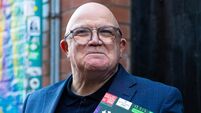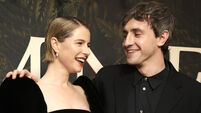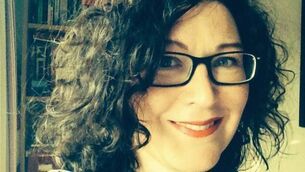'He had 20 Tupperware boxes full of snakes': Hector on his new series in Australia
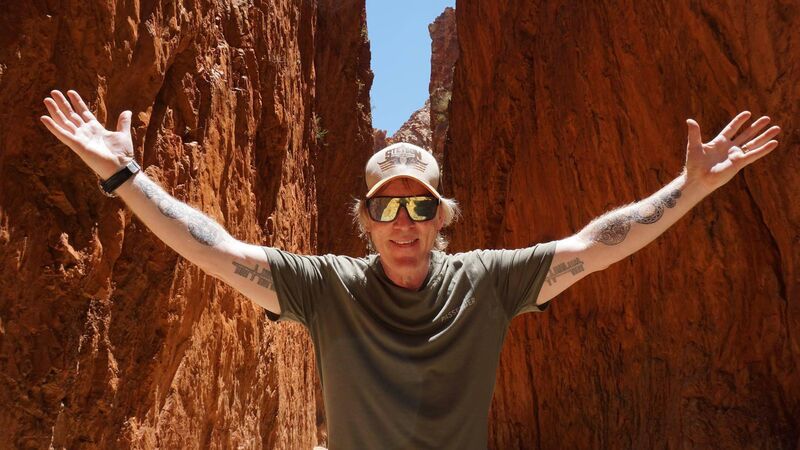
Hector Ó hEochagáin in an episode of his latest TG4 travel show Hector OZ/NZ.
Hector Ó hEochagáin has an enviable knack for striking up lively conversation with strangers, a useful trait for a TV travel show presenter. In – a seven-part series in which he clocks up 55,000 kilometres travelling around Australia and the length of New Zealand’s north and south islands – his unwitting foils include postmen, truckers and snake hunters.
The snake hunter is an occupation peculiar to Australia. The country is festooned with snakes during summer months. Ó hEochagáin and his film crew stumbled upon a snake hunter at a Costco petrol station in Diamond Creek, a suburb an hour outside Melbourne, which was closed off because of a snake alarm. The snake hunter’s job is to catch snakes and release them in the wild. Hector spent a day with the snake hunter to get a feel for his work.
“Have you ever seen anything like it?” says Ó hEochagáin in exasperation. “In the back of the pickup truck, he had about 20 Tupperware boxes full of snakes. I had to sit in the car with them. I kept looking back, going, ‘Are those darn Tupperware lids sealed properly?’ You know the ones that click? And we've got several of the world's deadliest snakes bumping around back there.
“He got one callout. This guy was working on his laptop in his conservatory, and a snake had come in there – it was an eastern brown snake, responsible for more snake-bite deaths in Australia than all the other snakes put together, and it was underneath his chair where he was working for an hour!”
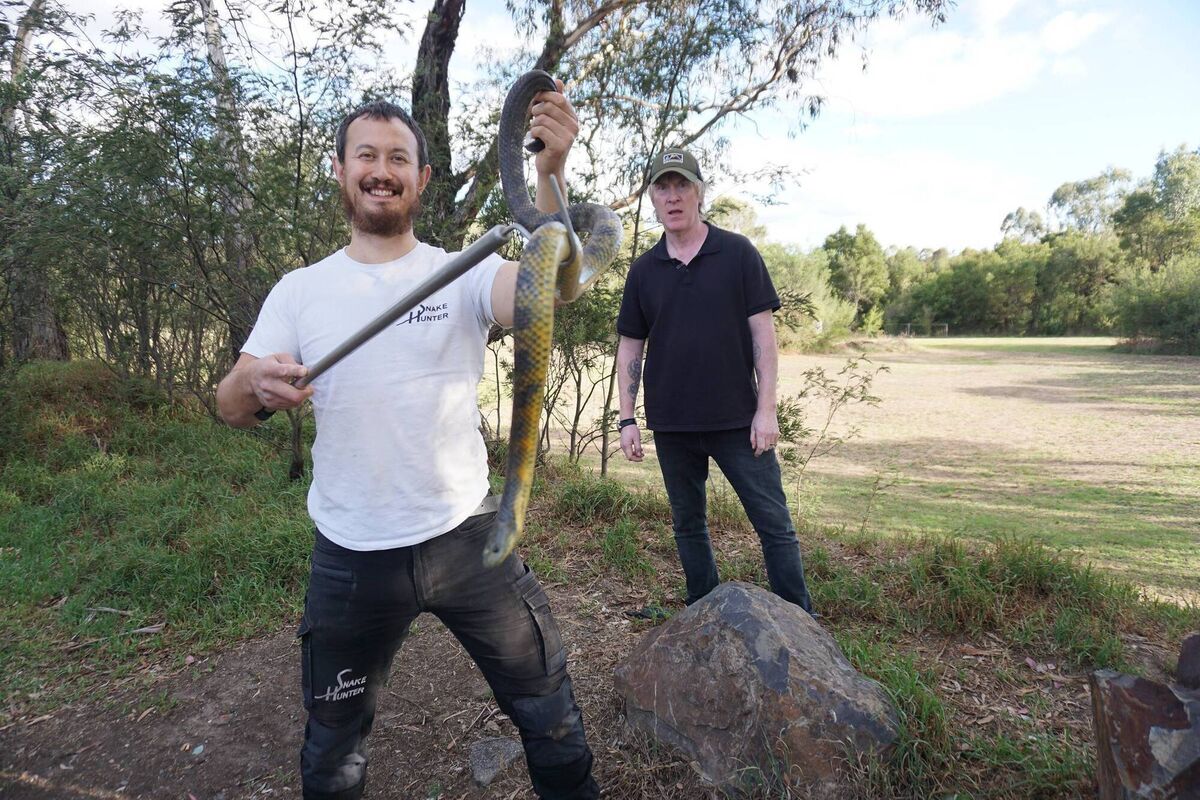
Ó hEochagáin’s film crew includes his regular sidekick, the internationally renowned cinematographer Ross O’Callaghan, or “Rosco,” as Ó hEochagáin calls him. O’Callaghan’s footage is spectacular. The pair are retracing steps taken in a previous travel series from 2006, including a breathtaking flight with the pilot, Trevor Wright, in a Cessna plane across central Australia’s outback, or what is often referred to as the country’s “dead red centre”, a harsh landscape overcrowded with pesky flies, laments Ó hEochagáin, at one point.
“That flight was mind-bending,” says Ó hEochagáin, “like to fly to fly at 500-600 meters above the ground for five hours, and you’re looking down on the land below, and Trevor says, ‘That lake there is the biggest lake in New South Wales, but that's dry now, but will be flooded in a month's time.’ And that lake is the size of Louth.
“We landed in William Creek, population four people where Trevor lives, at 2 o'clock in the afternoon. My mobile phone shut down a minute after landing on the tarmacadam. The phone spat out a message saying ‘dangerously high temperature. Mobile phone turned off.’ It was 38 degrees Fahrenheit. There's one road in and one road out of that place, William Creek.
“Beside it is the world's biggest cattle station called Anna Creek Cattle Station. Once every six weeks, the ranchers and cowboys come in to drink in the local bar and then go back out to the ranch. We were on a ranch in Queensland half the size of Mayo. The farmers use helicopters to try and find their cattle. One farmer said he only sees some of his cattle once a year because they're so far away.”
One of Ó hEochagáin’s objectives was to examine the Irish diaspora in Australia, conscious that people from every parish in Ireland know of a neighbour or relative who has been lured Down Under. “It’s a land of opportunity,” he says.
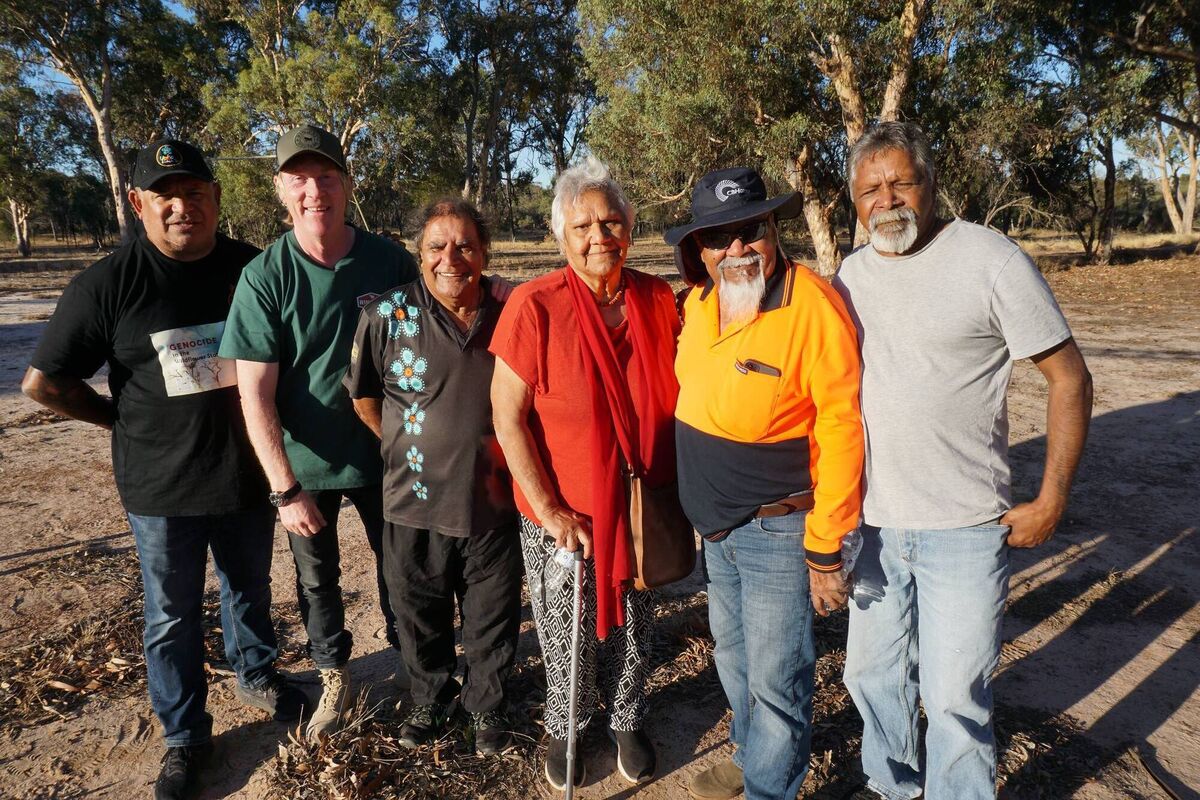
The series also packs a political punch, as it investigates Australia’s approach to refugees and its treatment of Aboriginals. There is a poignant “thank you to the traditional owners of the lands where Hector was filmed” that closes each Australian episode.
At one juncture, Ó hEochagáin goes stargazing with an Aboriginal man outside Perth in Western Australia, lighting a fire at 11 o'clock at night in the middle of the outback. His Aboriginal guide explained what he sees when he looks at the sky.
“He said, ‘Now I'll show you the lizard.’ They see animals in the sky. They don't see The Plough and all that,” says Ó hEochagáin. “When I sat with him there by the campfire, I realised that my people and our people have been doing that, sitting by the fire, telling stories as well for thousands of years. It’s no wonder the Irish – when they were sent down there as slaves and treated like dirt by the English – found a friend in the Aboriginals.
“They're so spiritual. They're in a dream world. He was telling me all about nighttime and the elders and light. All of a sudden, there was a gust of wind. There had been no wind for an hour. It came right by us in the middle of the outback, in the dead of night for no reason at all. He named the spirit and he said, ‘He's welcomed you here now. Did you hear him as he went by?’ The way he explained it to me was magic. Now I have a different perception of what the wind is. The wind is telling us stuff.”
- begins screening on TG4, 9.30pm, Thursday, October 30
The final two episodes of Hector OZ/NZ take place in New Zealand. For more than half a year, Ó hEochagáin and his team made phone calls trying to track down Smiley Barrett. Eventually, they hit pay dirt, securing an interview with the Taranaki farmer (and one-time Co Meath resident) whose three sons, Beauden, Jordie and Scott, are All Blacks internationals. Ó hEochagáin also hooks up with tattoo artists, kite makers, visits wine country, and finds kindred spirits in the Māori community.

“There's a rise in the Māori language and culture in New Zealand and the pride of the people,” says Ó hEochagáin. “It’s like what's happening in Ireland, where people are falling back in love with the Irish language. It has never been a better time for the Māori. They fought their way for such a long time. Now you can have your tribal tattoos on your face and be a surgeon or a doctor.
“The Māori have a confidence and an undeniably strong voice to fight for their rights. I met Tame Iti, the most famous Māori activist of the lot. They always had a united voice whereas Aboriginals in Australia have no voice. There are hundreds of different Aboriginal tribes. There's no unified voice. They don't have a trade union, a leader or a political party. The Māori are unified, always have been, and have said: ‘You won't do this to us.’”

